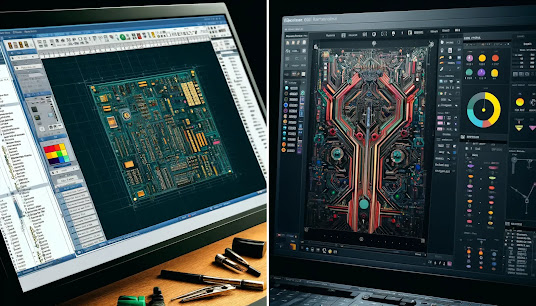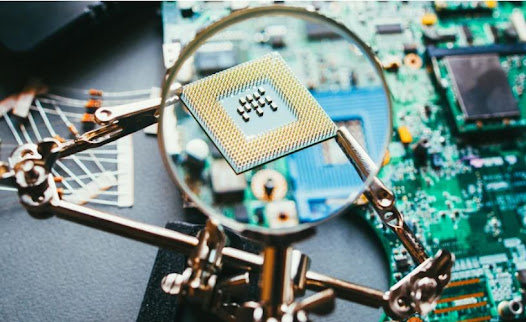Via-in-pad technology has become a cornerstone in modern printed circuit board (PCB) design, enabling designers to meet the increasing demands for miniaturization and high-performance electronics. However, the intricacies of via-in-pad design require strict adherence to industry standards to ensure reliability and functionality. The IPC standards, developed by the Association Connecting Electronics Industries, serve as the benchmark for
PCB design, providing essential guidelines that help designers navigate the complexities of via-in-pad implementation. This blog post delves into the critical IPC standards for via-in-pad PCB design, offering insights and best practices for electronics designers aiming to optimize their PCBs within the framework of globally recognized benchmarks.
I'll proceed with the next sections sequentially, focusing on clarity, accuracy, and engagement. Let's continue with the section on "Understanding Via-in-Pad Design."
Understanding Via-in-Pad Design
What is Via-in-Pad?
Via-in-pad design refers to the practice of placing vias directly under component pads. This approach is particularly beneficial in high-density interconnect (HDI) PCBs, where space is at a premium and performance is critical. By integrating vias into the pads, designers can reduce the PCB's overall size and improve its electrical performance.
Advantages of Via-in-Pad Design
- Space Efficiency: Allows for a more compact board layout, essential for modern, miniaturized electronic devices.
- Improved Electrical Performance: Minimizes the length of traces between components, reducing inductance and improving signal integrity.
- Enhanced Thermal Management: Via-in-pad designs can improve heat dissipation, crucial for high-power or high-speed electronic components.
Challenges in Via-in-Pad Design
- Solder Migration: Without proper planning, solder can wick into the via during assembly, potentially leading to weak solder joints or open circuits.
- Cost Implications: The additional steps required in via-in-pad design, such as via plugging and capping, can increase manufacturing costs.
- Complexity in Assembly: Ensuring that vias do not compromise the mechanical integrity of the pad during assembly requires careful design and quality control.
By addressing these challenges with strategic design choices and adherence to IPC standards, designers can leverage the benefits of via-in-pad technology to create more efficient and reliable PCBs.
Next, I'll transition into the section on "Overview of IPC Standards," where we'll introduce the IPC standards and their role in ensuring quality in PCB design.
Overview of IPC Standards
Introduction to IPC Standards in PCB Design
The Institute for Printed Circuits (IPC) has established a series of standards that serve as the cornerstone for PCB design and manufacturing. These guidelines are meticulously crafted to ensure quality, reliability, and consistency across the electronics industry, covering everything from design and material selection to assembly processes and testing methodologies.
Significance of Adhering to IPC Standards
- Quality Assurance: IPC standards provide a framework that helps manufacturers maintain a high level of quality in their PCBs, crucial for the longevity and reliability of electronic devices.
- Industry Consistency: By adhering to these standards, manufacturers and designers ensure consistency across the industry, facilitating clearer communication and expectations between different stakeholders.
- Innovation and Improvement: IPC standards are regularly updated to reflect the latest technological advancements and industry practices, encouraging continuous improvement and innovation in PCB design.
FYI, IPC standards play a pivotal role in guiding designers through the best practices and considerations to optimize their PCBs for both performance and manufacturability.
With this context in place, the next section will dive deeper into the specific IPC standards related to via-in-pad design, providing detailed insights into how these guidelines influence design decisions and practices.
IPC Standards for Via-in-Pad Design
Key IPC Standards for Via-in-Pad
IPC standards specific to via-in-pad design focus on various aspects, from via filling and plugging to pad size and annular ring requirements. Here's a breakdown of critical areas covered by these standards:
- Via Filling and Plugging: IPC standards specify the materials and methods for via filling and plugging, ensuring that vias don't become a liability during the soldering process, which could lead to solder voiding or escape.
- Annular Ring and Pad Size: Guidelines are provided on the minimum sizes and tolerances for annular rings and pads, which are crucial for maintaining structural integrity and ensuring reliable solder joints.
- Thermal Management: Standards address the design considerations for thermal management, particularly important in via-in-pad designs where vias can be used to transfer heat away from components.
- Electrical Performance: There are recommendations on how to optimize via-in-pad designs for better electrical performance, including considerations for impedance control and signal integrity.
Best Practices as Outlined by IPC
- Design for Manufacturability (DFM): IPC standards encourage designers to consider manufacturability from the outset, incorporating features that simplify the assembly process and reduce potential defects.
- Quality Control: Adherence to IPC standards necessitates rigorous quality control measures, ensuring that every aspect of the via-in-pad design aligns with the established benchmarks.
- Continuous Learning: IPC standards evolve, and staying abreast of these changes is crucial for designers, underscoring the importance of ongoing education and adaptation in the field.
Adopting IPC Standards in Design Workflow
Incorporating IPC standards into the PCB design workflow enhances the final product's reliability and performance. Designers are encouraged to reference these standards throughout the design process, from initial layout to final verification, ensuring every detail aligns with industry best practices.
The next section will shift focus to practical considerations and tips for implementing via-in-pad design in accordance with IPC standards, providing actionable advice for designers.
Practical Considerations and Tips
When implementing via-in-pad design, adhering to IPC standards is crucial for success. Here are some practical tips and considerations to ensure your design meets industry benchmarks:
1. Via Filling and Plugging:
Choose the right filling material: Ensure the material used for via filling is compatible with the PCB fabrication process and end-use requirements.
Avoid solder wicking: Properly plugged and capped vias prevent solder from wicking into the via during reflow, which could compromise component placement and function.
2. Managing Pad Size and Annular Rings:
Follow IPC guidelines for pad size to ensure there's enough surface area for soldering components while minimizing the risk of bridging.
Ensure the annular ring meets minimum size requirements to provide structural integrity to the via and prevent breakout.
3. Thermal and Electrical Performance:
Utilize thermal relief pads where necessary to manage heat distribution without compromising the electrical connection.
Consider the impact of via-in-pad design on impedance and signal integrity, especially in high-speed circuits.
4. Quality Control and Testing:
Implement rigorous inspection and testing aligned with IPC standards to identify and rectify potential issues early in the production process.
Use x-ray inspection to verify via fill and plugging, especially for hidden or buried vias.
5. Design for Manufacturability (DFM):
Collaborate with fabricators early in the design process to ensure your via-in-pad design is manufacturable and meets all IPC standards.
Use DFM checks to identify potential issues that could affect manufacturing efficiency or product reliability.
6. Documentation and Communication:
Clearly document your design choices and the applicable IPC standards to ensure alignment across the design and manufacturing teams.
Maintain open communication with your PCB manufacturer to ensure any deviations from standard practices are discussed and approved.
By incorporating these practical tips and adhering to IPC standards, designers can optimize their via-in-pad designs for reliability, manufacturability, and performance.
Next, we'll explore some real-world case studies or examples to illustrate how IPC standards are applied in via-in-pad PCB design, showcasing the benefits and challenges encountered in actual scenarios.
Case Studies or Examples
To illustrate the real-world application of IPC standards in via-in-pad PCB design, let's examine a couple of case studies that highlight the practical benefits and challenges encountered during the design and manufacturing process.
Case Study 1: High-Density Consumer Electronics Device
Scenario: A design team working on a compact consumer electronics device needed to incorporate a high-density PCB with multiple high-speed components.
Challenge: Ensuring reliable electrical connections and adequate thermal management while minimizing the PCB's footprint.
Solution: The team employed via-in-pad technology, adhering to IPC standards for via filling, pad size, and thermal management.
Outcome: The adherence to IPC standards enabled the team to achieve a compact, high-performance design. The device passed all reliability tests, thanks to the effective thermal management and robust electrical connections provided by the optimized via-in-pad design.
Case Study 2: Industrial Automation Control Board
Scenario: An industrial automation company was developing a control board requiring high reliability under harsh conditions.
Challenge: Designing a PCB that could withstand high temperatures and vibrations while maintaining signal integrity and power distribution.
Solution: The design incorporated via-in-pad with specific attention to IPC standards for annular ring sizes, via fill materials, and robustness.
Outcome: The control board exhibited exceptional performance and durability, with the via-in-pad design contributing significantly to its ability to withstand extreme conditions, as per the IPC guidelines.
Learning Points:
Adherence to Standards: Both cases demonstrate how adherence to IPC standards in via-in-pad design can significantly enhance the reliability and performance of PCBs in diverse applications.
Design Validation: The importance of thorough testing and validation, in line with IPC standards, was crucial in identifying potential issues early and ensuring the end product's quality and reliability.
To conclude our exploration, the next section will summarize the key takeaways from this blog post, reinforcing the importance of IPC standards in via-in-pad PCB design and encouraging ongoing learning and adherence to these guidelines.
Conclusion
Via-in-pad design is a powerful technique in PCB design, offering significant benefits in terms of space efficiency, electrical performance, and thermal management. However, its successful implementation hinges on strict adherence to industry standards, specifically those set forth by the IPC. Through this post, we've explored the nuances of via-in-pad design, IPC standards relevant to this technique, and practical considerations to ensure effective implementation.
Key Takeaways:
- Adherence to IPC Standards: It's crucial for designers to adhere to IPC standards to ensure the reliability, functionality, and manufacturability of via-in-pad PCBs.
- Best Practices: Incorporating best practices, such as proper via filling and plugging and adhering to recommended pad sizes and annular rings, can significantly improve the PCB's performance and longevity.
- Ongoing Learning: The field of PCB design is ever-evolving, and staying updated with the latest IPC standards and industry trends is essential for designers committed to excellence.
As we've seen through the case studies, the practical application of these standards can lead to successful outcomes in diverse industries, underscoring the universal value of the IPC's guidelines. Whether you're a seasoned PCB designer or new to the field, embracing these standards is a step toward mastering the art and science of modern PCB design.
























